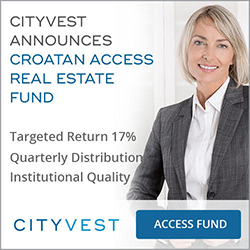
Dear Realty 411 Investors,
Would you like to own single family rentals (or 2-4 unit properties) in one of the most investor-advantaged real estate markets of 2025?
Join us for a private buying opportunity webinar for off-market turn-key rental properties in Cleveland, Ohio!
All properties come fully-renovated with tenants and local property management in place so you can own them from anywhere without having to be the landlord or the rehabber.
Reserve Your Spot at the Live Webinar:
Cleveland has strong rental demand and some of the most optimal price to rent ratios in the country.
CLEVELAND MARKET HIGHLIGHTS:
- Home Prices Appreciated 61% Over the Last 5 Years
- Ranked Top 10 Hottest Real Estate Markets of 2024 by Zillow
- Cost of Living is 9% Below the National Average
- Cost of Housing is 19% Below the National Average
- Ranked Top 20 Places in the WORLD to Visit by NatGeo

Learn more about why Cleveland is so advantageous for real estate investors in 2025 and get access to off-market turn-key rental properties.
Make your money when you buy and mitigate your downside risk by closing on a performing property that is already renovated and cash-flowing.
BUYING OPPORTUNITY HIGHLIGHTS
- Fully-Renovated Single Family Homes (And 2-4 Unit Properties)
- Tenants and Local Property Management in Place
- Average Cap Rate: 7%
- Average Purchase Price: 175K
- High Demand Neighborhoods
Register here to join us on the Live Webinar – featuring Turnkey Rental Properties in Cleveland, Ohio – this Tuesday, April 1st, 2025 at 6pm Pacific Time, 9pm Eastern.
P.S: This Webinar will be LIVE and we will take YOUR questions at the end of the webinar.
– Matt Bowles
Partner | Maverick Investor Group, LLC















 In addition, you want to be thinking about placing other items of value that you own, such as bank accounts, jewelry, vehicles, boats or artwork in property trusts. This will protect these assets from showing up should you be sued for any reason.
In addition, you want to be thinking about placing other items of value that you own, such as bank accounts, jewelry, vehicles, boats or artwork in property trusts. This will protect these assets from showing up should you be sued for any reason.
